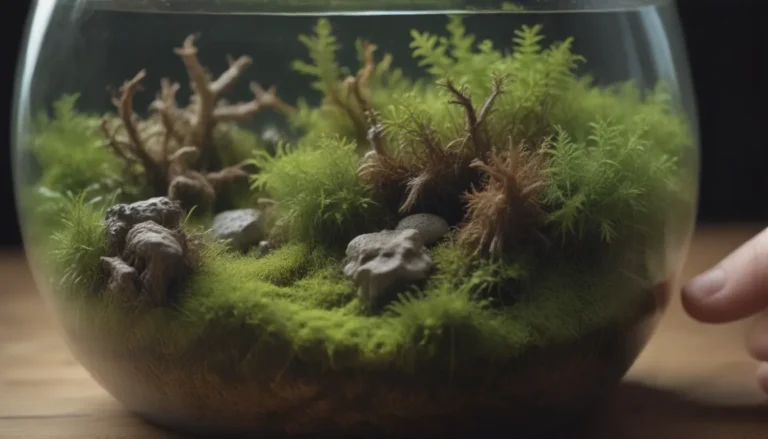The Complete Guide to Growing and Caring for Parlor Palms

If you’re looking for a beautiful, low-maintenance plant to add a touch of tropical flair to your home, look no further than the Parlor Palm. Known for its lush, tropical fronds and easygoing nature, the Parlor Palm, also known as Chamaedorea elegans, is the perfect plant for beginners. In this article, we’ll dive deep into everything you need to know to grow and care for your Parlor Palm, from light and soil requirements to common pests and diseases.
The Beauty of Parlor Palms
The Parlor Palm is a true gem in the world of houseplants. Its attractive clumps of light-textured foliage and thin trunks can brighten up any room, while also providing a host of benefits. Not only does the Parlor Palm help purify and clean the air in your home, but it also adds humidity and a touch of green that can liven up any space.
You may be surprised to learn that the Parlor Palm was actually discovered in Central America and brought back to the United States, where it quickly became a popular indoor plant. With proper care, these slow growers can reach heights of 2 to 6 feet indoors and up to 16 feet outdoors. They can live for decades as indoor trees and even longer in the right outdoor climate.
Parlor Palm Care Tips
Here are some essential care tips to ensure your Parlor Palm thrives in your home:
Light
- Parlor Palms are considered low-light plants, but they still need some natural light to grow.
- Aim for bright, filtered sunlight, such as that coming from a north-facing window.
- These plants can adapt to lower light conditions, making them a versatile choice for any space.
Soil
- Use a high-quality peat-based potting mix for indoor Parlor Palms.
- Outdoor Parlor Palms can thrive in almost any soil type, but avoid salty soil.
- Be mindful of overwatering, as Parlor Palms are sensitive to waterlogged conditions.
Water
- Water your Parlor Palm when the top inch of soil feels dry.
- Avoid overwatering, as these plants are sensitive to sitting in waterlogged soil.
- Yellow fronds are a sign that your plant may need more water.
Temperature and Humidity
- Keep your Parlor Palm in temperatures between 65 and 80 degrees Fahrenheit.
- Avoid cold drafts, as the plant can die if exposed to frost.
- Maintain average humidity levels to prevent dry leaf margins and brown tips.
Fertilizer
- Use a weak liquid fertilizer once or twice during the growing season.
- Avoid fertilizing during the winter months, as Parlor Palms are light feeders.
Types of Parlor Palms
There are several varieties of Parlor Palms to choose from, including:
- C. elegans
- C. erumpens
- C. hooperiana
Each variety offers its own unique characteristics and growth habits, so choose the one that best suits your space and preferences.
Pruning and Propagation
While you can remove dried or browned fronds from your Parlor Palm, avoid pruning the plant excessively, as this can stunt its growth. Propagation is typically done through seeds by professional growers, though dividing a clump into smaller sections may be possible.
Potting and Repotting
Parlor Palms have delicate root systems and grow slowly, so be cautious when repotting. Only repot into a slightly larger container every other year to prevent root rot. If your potting mix becomes spongy or mucky, it’s time to repot your plant.
Common Pests and Diseases
Keep an eye out for common pests like aphids, mealy bugs, scale, and whitefly, as well as fungal issues like leaf spots and root rot. Treat infestations quickly with mild soap and water, followed by an organic insecticide. Remove affected leaves to prevent the spread of disease.
Common Problems and Solutions
Even the easygoing Parlor Palm can experience issues like browning leaf tips, yellowing leaves, root rot, and stem cankers. Here’s how to address these common problems:
- Browning Leaf Tips: Adjust light levels and ensure proper watering.
- Yellowing Leaves: Move the plant to a spot with less direct light and adjust watering frequency.
- Root Rot: Trim affected roots and be mindful of watering habits to prevent further rot.
- Stem Cankers: Cut off affected areas, but be prepared for potential plant loss.
In conclusion, the Parlor Palm is a fantastic choice for both seasoned plant enthusiasts and beginner gardeners. With its adaptability to various light conditions and minimal maintenance requirements, it’s a plant that can thrive in almost any indoor space. By following the care tips outlined in this guide, you can enjoy the beauty and benefits of the Parlor Palm for years to come.





